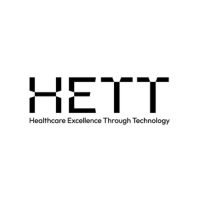A pivotal session at HETT Show 2023 was the ‘Update on National Standards and Architecture’. Gary McAllister, the National Director for Architecture, and Ian Townend, the Chief Architect, both from NHS England, delivered a comprehensive update on the current status of the Technology Strategy Architecture and Standards within the NHS as part of TSAS's ongoing initiatives.
A Look Forward into the future of architecture
In the realm of data management, a significant backlog of information has built up over time, which has meant there is now a need to establish a well-organised and transparent data centre. The data infrastructure needs to be clear and equipped to meet the evolving demands of the digital landscape.
This comes at a time of a new world for the NHS, following the convergence of NHS Digital, Health Education England (HEE), and NHS England, forging a new collaborative entity. Within this new world, a fresh perspective is emerging, viewing healthcare architecture through two distinct lenses: the external architecture that interfaces with the broader healthcare ecosystem, and the internal architecture shaping the workings within.
Guiding this architectural evolution is the structured framework of TOGAF (The Open Group Architecture Framework). Aligned with the vision of the new NHS architecture, TOGAF provides a systematic methodology for designing, planning, implementing, and governing enterprise information technology architectures.
Commencing an open architecture exercise
Historically, the messaging surrounding architecture followed a predominantly top-down approach. However, with the implementation of a new strategy for architecture, the focus has shifted towards a more inclusive and responsive model. The primary objective now is to actively listen and comprehend the challenges faced, working collaboratively on behalf of the NHS for the benefit of the NHS.
In the initial phase of this architectural evolution, an emphasis is placed on conducting an open architecture exercise. This entails architecting in a transparent manner, engaging in a comprehensive 360-degree evaluation. The process involves actively seeking feedback and addressing issues to enhance outcomes for patients, clinicians, and the broader healthcare workforce.
TSAS have initiated a comprehensive architectural listening exercise that spans the entirety of the NHS. This thorough and inclusive initiative aims to capture the perspectives of all stakeholders within the healthcare ecosystem. At the end of the process, the plan is to deliver on these requirements uncovered in the listening process. The overarching goal is to establish an open and transparent platform that encourages feedback on the undertaken initiatives and their rationale. TSAS plans to publish the identified requirements and roadmap and then start servicing the requirements in the future.
Another key objective is to establish coherence across all initiatives, eliminating disparities between directives for the central operations and those on the frontline. The aim is to minimise inconsistencies in published information, ensuring uniformity in access points. This approach seeks to streamline communication and accessibility. As new elements emerge over time, a structured framework will facilitate effective communication, allowing individuals to relay and incorporate these developments seamlessly. This concerted effort towards consistency and streamlined communication reflects a commitment to creating a unified and efficient architectural landscape.

Further steps in redefining the architecture of the NHS
Centering national healthcare architecture around patients is the core focus, emphasising clinical modeling and patient-centric design based on freedom of choice. In the next 3-6 months, the aim is to develop a target reference architecture to align every aspect with requirements, ensuring a seamless and integrated framework.
Concurrently, efforts are underway to establish a technology architecture framework, adhering to traditional approaches for enterprise-level technology management. This includes aligning NHS divisions and leveraging government support where guidelines aren't followed.
The NHS England architectural process is tightly connected to governance, involving gated procedures from conception to delivery. The overarching goal is to enhance efficiency and effectiveness.
Motivated by a drive for consistency and improved healthcare quality, blueprints are being established to reduce variation, costs, and waste. Key objectives include a new architectural vision, openness in architecture, blueprint creation for minimising variation, information standards reform exploration, and roadmap development for the future. These goals collectively signify a strategic shift toward transparent, patient-centric healthcare architecture of the highest quality and efficiency.
An update on NHS standards
As part of the data strategy commitment, TSAS is undertaking the redevelopment of the current end-to-end process for the entire life cycle of standards development. This extends beyond the existing process that concludes with standard publication, now encompassing implementation and continuing through to deprecation. The initiative aims to involve diverse communities, extending beyond the central entities.
Key steps include defining the types of standards considered and outlining the assurance processes for each. A common approval process for all standards under the acts will be established, with the goal of finalising this comprehensive approach by April 2024. This strategic overhaul signifies a commitment to a more inclusive, thorough, and standardised life cycle for standards development within the NHS.
Standards legislation
Back in 2010, the landscape around standards lacked specific legislation and was primarily published as policy. However, a significant shift occurred in 2012 under the Health and Social Care Act, granting the central authority the power to publish information standards. Further developments emerged in the 2022 acts, already published but not yet commenced, introducing a "must comply" clause for care provider organisations, and enforcement mechanisms. The trajectory continued into the new data protection and digital information bill under DCMS, which imposes compliance requirements on IT providers, accompanied by an enforcement mechanism that will be established through legislation. These legislative milestones mark a progression toward a more structured and enforceable framework for standards within the evolving regulatory landscape.
.jpg?width=1024&height=683&name=27.09.23-Hett_day_two-675%20(1).jpg)
Interoperability strategy
The interoperability strategy comprises four major components aimed at fostering a seamless and integrated healthcare system. Firstly, there is the establishment of a national data model designed to represent care comprehensively. Secondly, a reusable architectural approach for interoperability is introduced, emphasising a standardised framework for efficient data exchange. The third component involves end-to-end life cycle management of interoperability standards, ensuring their continuous relevance and effectiveness. Lastly, there is a focus on managing adoption and aligning levers and incentives across the healthcare landscape.
This strategy is not limited to NHS England; it extends its reach to all other ALBs. The goal is to facilitate adoption while aligning various incentives and levers within and beyond NHS England. This inclusive approach prompts considerations of how to incorporate entities like the Care Quality Commission (CQC), exploring ways to integrate their powers into the broader framework for enhanced interoperability.
The portable care record
The Portable Care Record is a key focus area outlined in the strategy, encompassing two fundamental elements. Firstly, there's the establishment of a common structure for a care record that employs coding systems based on international standards. The second aspect involves utilising ISO standards to specify forms. Given the prevalence of forms within clinical systems, the lack of a common, vendor-neutral format has led to custom forms in each system. The objective is to define a standardised format, facilitating the creation of a national library of forms.
The vision is that within an Electronic Patient Record (EPR) system, users should be able to select a form, such as a Coma Score from a specific hospital, and have it seamlessly download under a system supplier that comprehends the specified format. Notably, progress is already underway in collaboration with Oxford University Hospitals. They've undertaken work to extract all templates from Millennium and have recently implemented a terminology server producer to enhance access to core terminologies and classifications, including mapping efforts.
The community piece
In the final part of their discussion, the focus shifted towards community involvement, expressing a keen interest in fostering more transparent collaboration. Notably, initiatives like INTEROPen have played a pivotal role in broadening community participation in the development of FIHR standards, and open balloting on specifications has been facilitated through HL& UK. To strengthen community engagement further, there are plans to re-establish the Architecture Editorial Group, which will bring together architectural perspectives from across the health and care sectors, including the supplier community. Additionally, there's a commitment to reinvigorate the Standards Community of Interest, emphasising the importance of a collaborative and inclusive approach to propel advancements in healthcare standards.
Join the conversation – register for HETT North 2024
Be part of the next discussion around architecture and standards by registering for HETT North 2024 taking place at Manchester Central Convention Complex, 28th February 2024. Key highlights include:
- 40+ hours of CPD-certified content across 6 streams
- 1-2-1 meeting opportunities with over 1,400 digital health professionals
- 100+ expert speakers
- 100+ innovative suppliers
%20(1).png?width=500&height=58&name=HETT%20insights%20logo%20RGB-04%20(1)%20(1).png)



